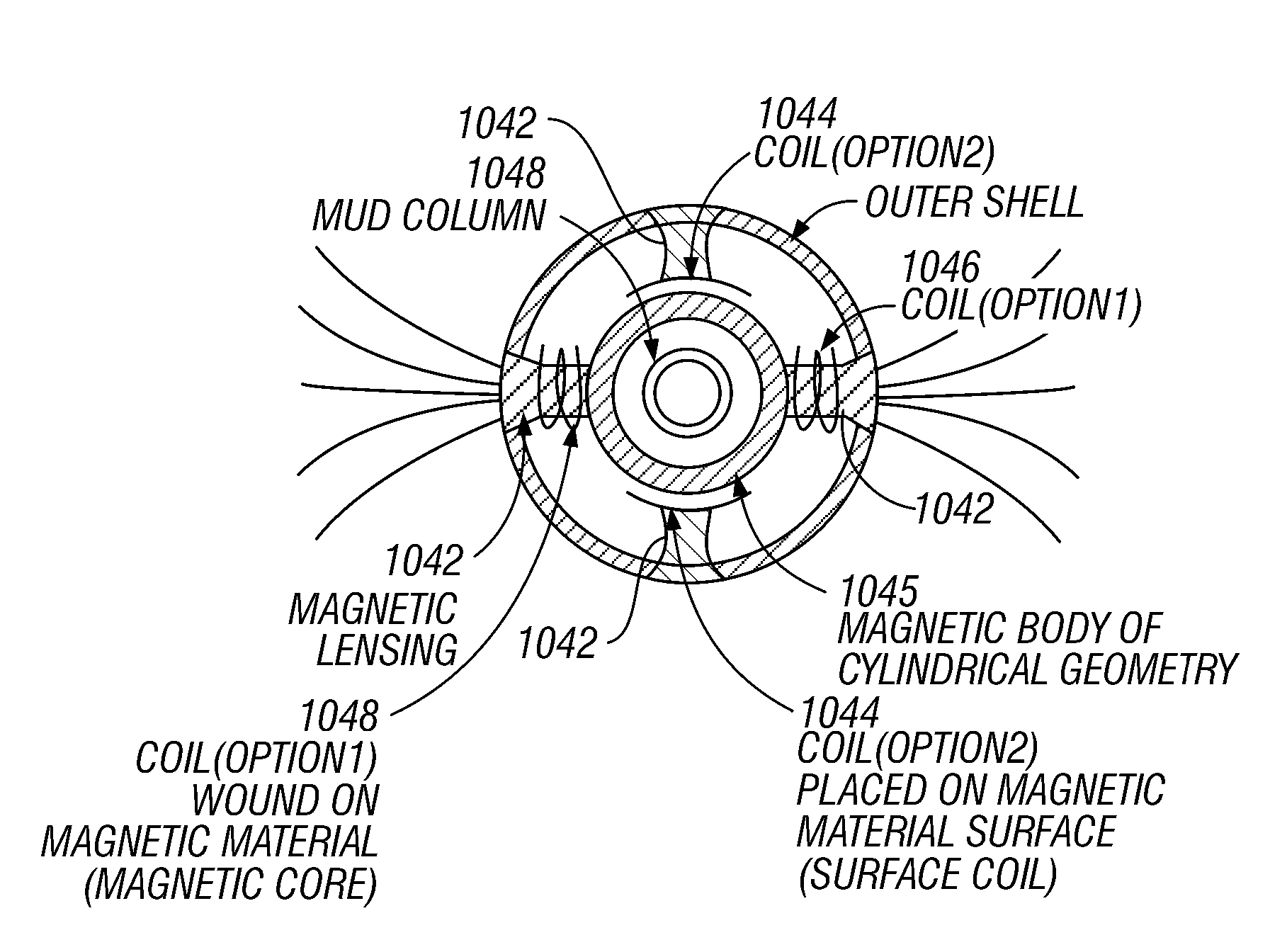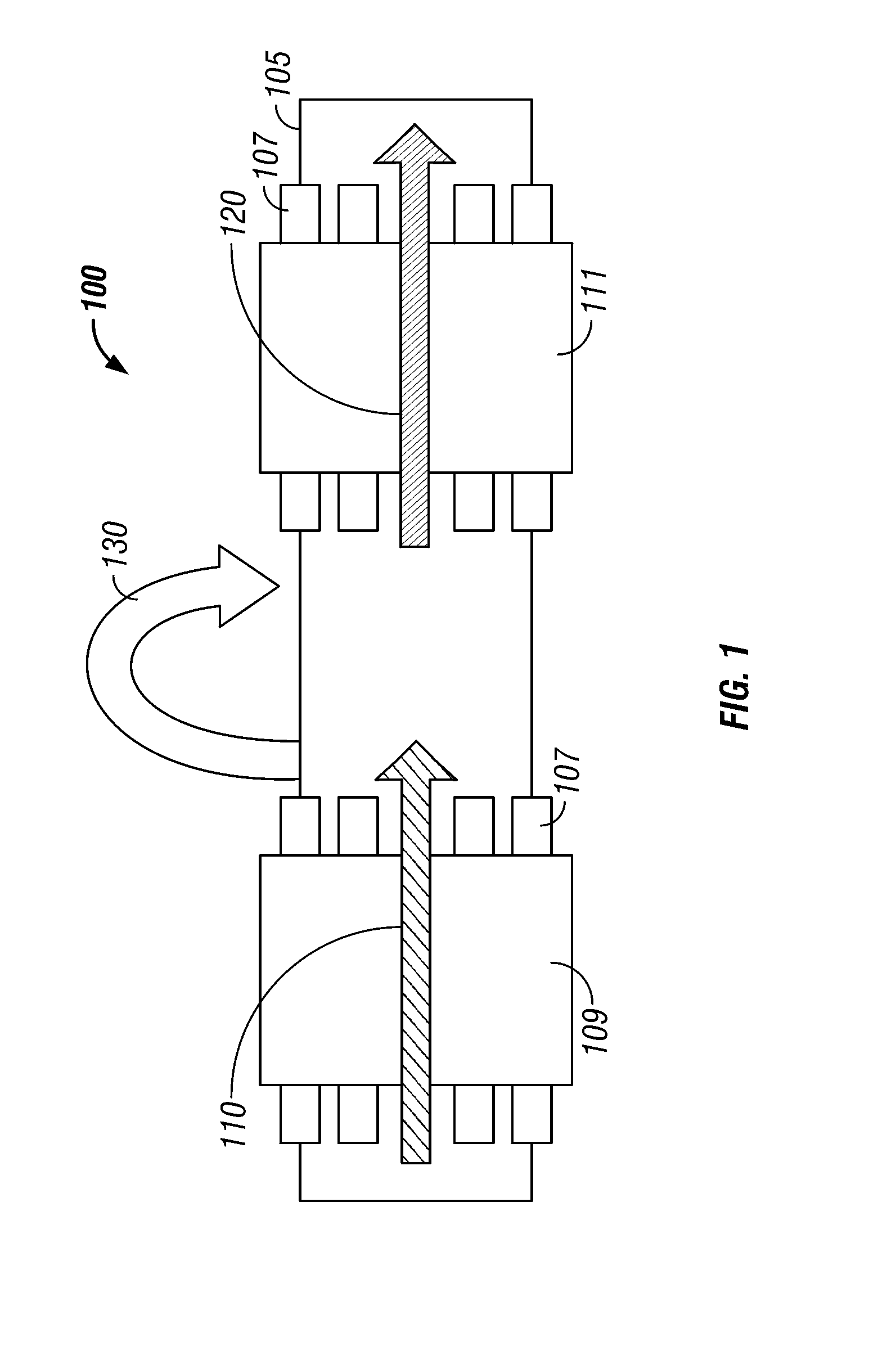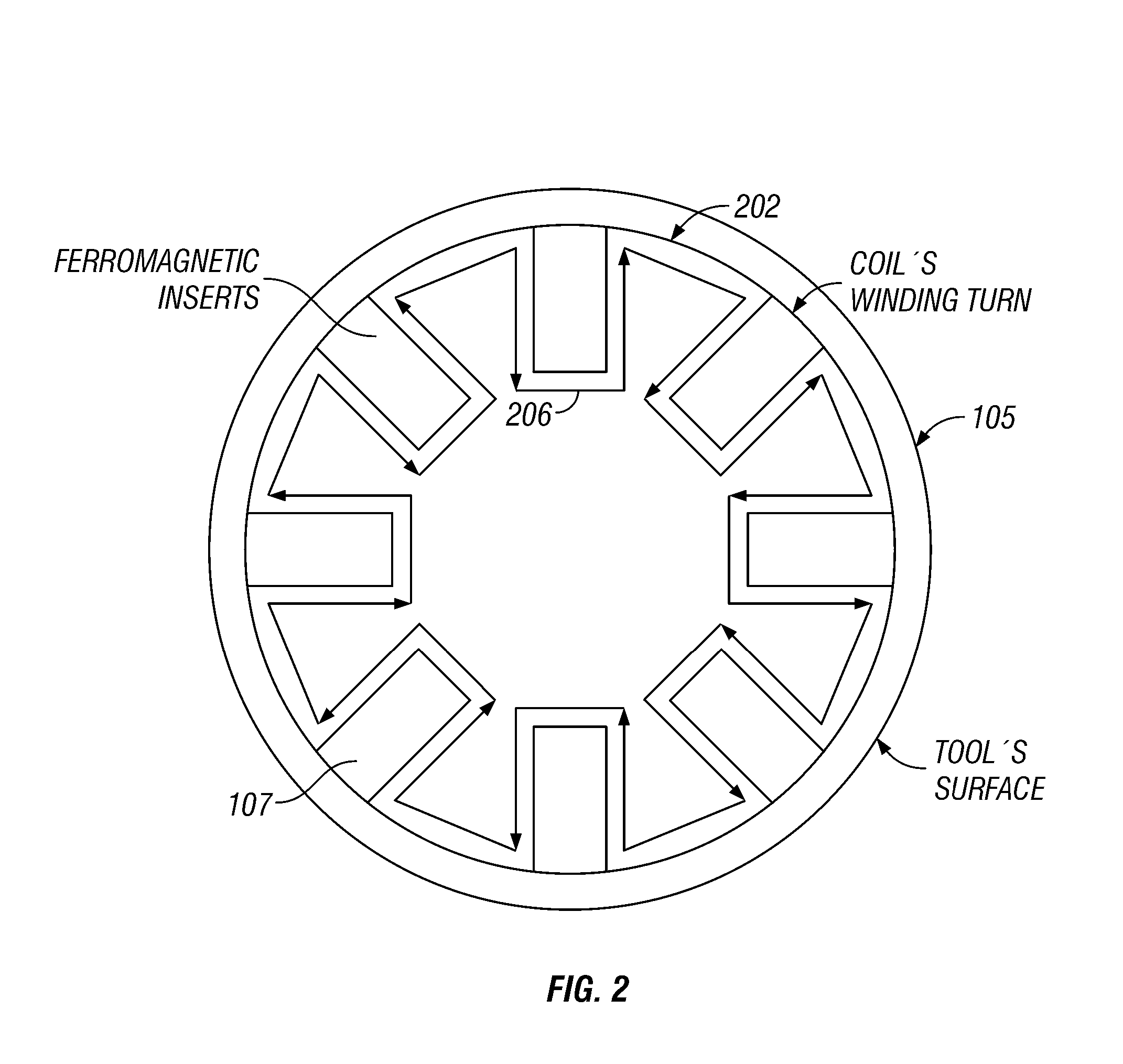Method and apparatus for multi-component induction instrument measuring system for geosteering and formation resistivity data interpretation in horizontal, vertical and deviated wells
a multi-component induction instrument and data interpretation technology, applied in the field of frequency or time domain induction resistivity measurement, can solve the problems of inability to detect individually, inconsistent data logs obtained with conventional transversal induction logging instruments, and difficult detection of hydrocarbon-bearing zones. , to achieve the effect of improving signal to noise ratio and measurement stability, and improving signal conten
- Summary
- Abstract
- Description
- Claims
- Application Information
AI Technical Summary
Benefits of technology
Problems solved by technology
Method used
Image
Examples
Embodiment Construction
[0077]The transmitter and receiver coil geometric areas together with the transmitter current define a total magnetic moment of an induction tool. By design, these coils are built preferably with an effective geometrical area sufficiently large to achieve the maximum possible random noise-free measurements while using conventional amounts of electrical power available to MWD equipment. A coil effective geometric area would be sufficiently large when non-productive losses that may occur while generating the primary magnetic field or detecting the secondary magnetic field flux induced from the formation are either adequately compensated for or properly accounted for. In many circumstances these limitations can be evaluated from the basic physics principles, i.e., from boundary conditions for the magnetic field being in a close proximity to a conductive and / or ferromagnetic materials or propagating along these parts.
[0078]It is known from the electromagnetic field science that if an ex...
PUM
 Login to View More
Login to View More Abstract
Description
Claims
Application Information
 Login to View More
Login to View More - R&D
- Intellectual Property
- Life Sciences
- Materials
- Tech Scout
- Unparalleled Data Quality
- Higher Quality Content
- 60% Fewer Hallucinations
Browse by: Latest US Patents, China's latest patents, Technical Efficacy Thesaurus, Application Domain, Technology Topic, Popular Technical Reports.
© 2025 PatSnap. All rights reserved.Legal|Privacy policy|Modern Slavery Act Transparency Statement|Sitemap|About US| Contact US: help@patsnap.com



